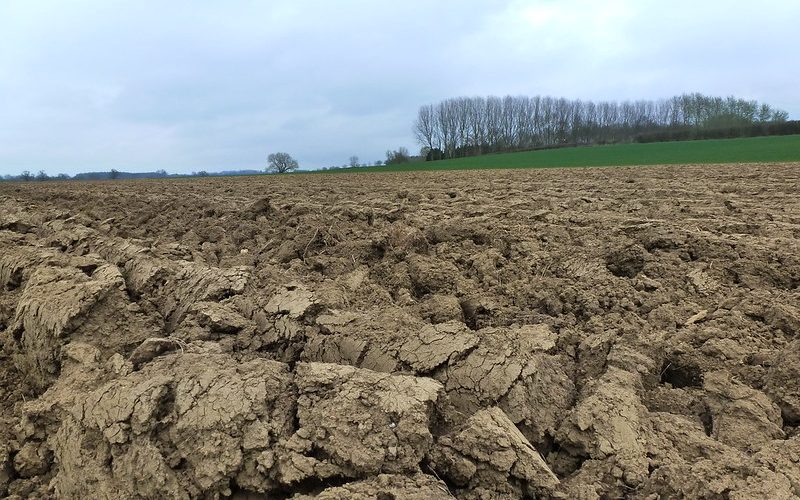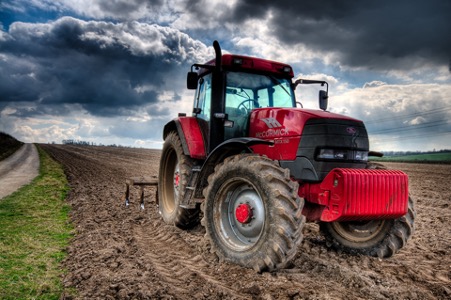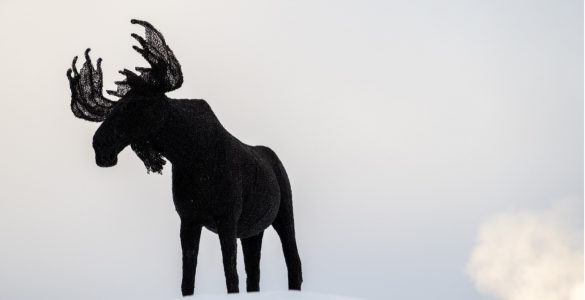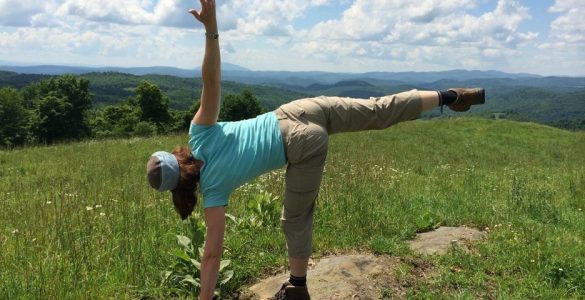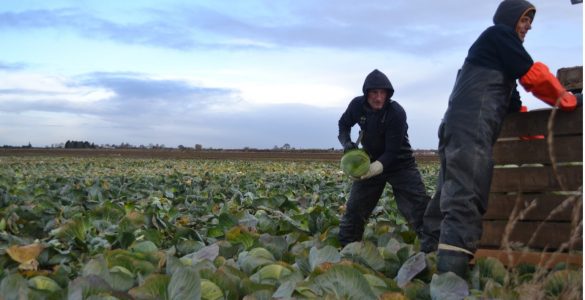Ed Lord
“Human perspectives on nature have always been coloured by connotations of recovery and restoration. But in the present century we have been especially busy – obsessively busy – in teasing out and delineating these connotations” (Smyth, 2019)
The intersection of human health and nature has a distinctly zeitgeist feel about it currently. Barely a week seems to pass without a news media piece extolling the health benefits of going outdoors or viewing the coast, gardens, parks and countryside. New terminology has proliferated in this domain: Biophilia, Shinrin-Yoku, forest bathing, ecotherapy, to name a few.
Networks of people focused on specific types of nature based self-care have been formed; for example, Mountains for the Mind and Mental Health Swims in the UK.
In a March 2020 commentary essay published in The Guardian Review the natural history author Patrick Barkham suggested that the nature and health theme is fast becoming its own literary genre – as he put it: “a rapidly growing forest of new books that examine cures found in nature” (Barkham, 2020). Particularly of note in this ‘new’ genre are a number of mass-market books with high global sales, these include Florence Williams’ The Nature Fix: why nature makes us happier, healthier, and more creative from 2018, and Richard Louv’s Last Child in the Woods: Saving Our Children From Nature-Deficit Disorder from 2005.
Three such works were released by popular publishers in the spring of 2020 alone, with prescient timing given unfolding self-care discourses related to the pandemic; The Natural Health Service: What the Great Outdoors Can Do for Your Mind by the journalist Isabel Hardman, Losing Eden: Why Our Minds Need the Wild by Lucy Jones, also a journalist, and The Well Gardened Mind by Sue Stuart-Smith, a psychiatrist by profession. As familiar social and economic rhythms fell away during those early months of the pandemic, people searched around en masse for every tree, every last socially distanced blade of grass, in their locality, looking for a balm to soothe the burgeoning stress and anxiety. It seemed that after slowly building momentum since the turn of the century the awareness of nature’s contribution to human health had reached its zenith at the perfectly opportune moment.
Allied to, and frequently cited in support of, the nature and health themes in these more popular media outlets and grass roots networks, there has also been much empirical, in-depth and ‘heavyweight’ material produced. This includes government departments, quangos, transnational agencies, and third sector organisations publishing multiple reports on the topic, papers in peer reviewed journals accruing at a notably increasing rate (Ives et al., 2017), and a number of ambitious academic textbook projects such as first editions of the “Oxford Textbook of Nature and Public Health” in 2018, and “The International Handbook of Forest Therapy” in 2019.
Could this phenomenon, however, really be seen as a “period-specific cultural pattern,” to use Krause’s (2019) definition of a zeitgeist? If it could, then what would be the utility of such a status anyway? This article aims to open up an initial inquiry into these two questions.
If assessed quantitatively, using the crude measure of the amount of academic papers published on the topic, it would seem that there is indeed a growing research interest. In a 2017 multidisciplinary review of what they call “Human-Nature Connection (HNC)” literature the authors found a dramatic upswing in the numbers of papers published since the turn of the millennium, and this growth was particularly marked after 2010 (Ives et al. 2017). For example, their search parameters found less than 10 HNC papers published in 2001, 20 papers published in 2009 and over 80 published in 2015. A 2014 review also noted this increase in the number of papers published, this time by referencing just the term “greenspace and health”: “Growth in this field of research is shown clearly by the increase in publications. For example, a search in the Web of Knowledge on just one term, “greenspace and health,” yielded 2 hits for 1990–1999, 34 for 2000–2009, and 45 from 2010 to June 2013” (Hartig, Mitchell, de Vries, & Frumkin, 2014, p. 209)
Leaving aside the possibility that the absolute number of all research outputs may have increased in this time period, thereby making these figures less striking, for such a quantitative accounting to inform us of cultural patterns would require delving into the social, cultural and organisational arrangements within which such research practices, their funding, and dissemination, are embedded.
In assessing the claim of any cultural pattern to be a zeitgeist Krause (2019) proposes that certain properties need to be delineated: duration, scope, course, and media and carriers. Many of the factors related to scope, and media and carriers have been introduced above. In looking at the nature and human health domain in terms of duration it can be seen how a zeitgeist is framed by an interplay between newness and continuity: this ‘thing’ has not sprung forth fully formed from a void, but neither is it simply an indistinguishable continuation of older ‘things.’
As suggested by the opening quote there is a long-standing narrative – something of a ‘common-sense’ claim – associating nature with physical and mental restoration. The work of Hippocrates in ancient Greece entitled “On Airs, Waters, and Places” is frequently cited as an illustration of the point that linking health and nature is nothing new. Many healthcare professions – Occupational Therapy and Nursing are key examples – have long organised and promoted nature based interventions like gardening; indeed a notable assertion by Florence Nightingale describes the foundation of the nursing role being “to put the patient in the best condition for nature to act upon him” (Nightingale, 2020 [1859]).
In relation to mental health specifically, narratives around an intertwining relationship between nature and ‘madness’ are a recurring theme stretching back centuries (for example, Shepard, 1982). As a physical manifestation of this intertwining thought there are many examples internationally (particularly in Western countries, settler colonial states and former colonies) of the use of formal tended gardens at mental asylums/hospitals as a therapeutic, calming and ‘taming’ influence on the ‘wild’ unreason of the inmates; this can be seen to prefigure the contemporary interest in ‘biophilic design’. As Edginton (1997) reports in relation to the famous York Retreat founded in 1796: “Design, then, would enable those who lost their sanity to recall their former serenity by being placed in an association with a natural, healthful environment.” (p. 91)
These ideas can be argued to be part of a wider orientation characteristic of the European Enlightenment and emergence of modernity, often summarised as ‘romanticism’ and explicitly associated with certain philosophers, including Jean-Jacques Rousseau, and artists, such as William Blake. In these schools of thought and expression nature is frequently set in binary opposition to human society and culture; in Thomas Hobbes’ orientation to this binary society and culture transcending nature in the progressive unfolding of the Enlightenment, in the romantic orientation of the binary this ‘progress’ acting as a debasement of the natural condition. The binary formulation itself – setting humans and nature as ontologically separate – can, however, be critiqued as simply representing the European Enlightenment as a particular spatially and temporally located culture in no way generalisable to the beliefs of any other human culture.
If contemporary notions of the health-giving benefits of nature are simply about the continuation of these much older orientations, however, then how can a claim to zeitgeist be supported? In other words what are the claims to newness and novelty that can be separated as distinct from this continuity?
First, a potential answer to this is the intensification of interest in this topic across diverse fields (scope); a practice assisted by the increasing acceptance of interdisciplinarity working in some academic disciplines.
Second, there is a receptive audience in policy making arenas, with numerous levels of government seeking novel approaches to meet a convergence of complex population health, environmental, and budget challenges.
Third, the urgency of the climate crisis, and wider knowledge of environmental degradation caused by the economic activities of contemporary society, has taken concern for nature from being a niche ‘single issue’ concern to a mainstream consideration infusing debate in all sectors.
Developing the first assertion; a wide variety of academic disciplines can be seen to have an interest in investigating the human health and nature intersection, even though definitions, scales, actors, and methodological approaches frequently differ markedly between these disciplines. on a pragmatic level the application and integration of knowledge from different disciplines is essential to navigate many complex contemporary challenges. Numerous attempts have been made to integrate research from different disciplines, these “field developments” include “Ecohealth”, “One Health”, “Ecological Public Health”, and, most recently, “Planetary Health” (Buse, et al., 2018; Haines, 2017)
This interdisciplinarity and ‘silo crossing’ is not the only factor in play, shifts within disciplines are also creating a conducive atmosphere to the nature and health theme. For example, in disciplines directly related to human health there has been a movement collectively summarised as ‘the new public health.’ This has its genesis in the growing acceptance of the inherent limitations to focusing on the individual alone and the need to include the social and environmental determinants of health. This refocus is also encouraged by a notional shift to preventative healthcare in response to population morbidity becoming dominated by non-communicable diseases, often related to lifestyle; this shift was heralded by the WHO Ottowa Charter in 1986.
Another addition to this ‘new public health’ nexus of discourses are ideas related to wellbeing, and the maximisation of positive health, sometimes called the ‘salutogenic approach’. Concrete outputs from this shift in emphasis include practices like social prescribing, and the activation of ‘community assets’ in which a social and natural environment is appraised in terms of its strengths and potentials as well as its threats as a container of risks. Implicit, and frequently made explicit, in the prevention and wellbeing focused ‘new public health’ is that the bounds of health stretch beyond the traditional domain of healthcare. This has led to a call for developing new partnerships – most obviously with social care – but also beyond the ‘usual suspects’. This is where the second claim to newness and novelty in the nature and health zeitgeist can be found: the policy arena.
There are a number of ways in which these ideas of meeting complex challenges through the application of concepts associated with the ‘new public health’ (like assets activation and non-typical partnerships) can be seen to be playing out in the policy agenda; here using Wales as an illustrative example. Included in areas of jurisdiction devolved to the Welsh Government are both health and social care, as well as departments associated with landscape and ‘space’ including environment, agriculture, forestry, rural development, culture, and town and country planning.
The activation of ‘assets’ such as particular landscapes in the service of health and wellbeing is well summed up in this quote from a report commissioned by the Welsh Government into the designated landscapes (such as National Parks and Areas of Outstanding Natural Beauty) in its jurisdiction: “The designated landscapes are now far more than passive ‘green lungs’ for the urban populations; they are as we state in our vision, the new, dynamic and productive ‘factories of well-being’” (Marsden, Lloyd-Jones & Williams, 2015, p. 5)
These partnerships are intended to contribute to the aforementioned public health goals of the health and social care sector, while attending to things like the move away from a single focus in the forestry sector on the ‘bottom line’ of timber production from plantations to a more complex emphasis on habitat development and protection, and a wider array of social and environmental outputs to be gained from woodland and forests.
Wallace (2019) argues that all of the UK devolved legislatures – Wales, Scotland, and Northern Ireland – have explicitly tried to operate differently from the central government. Specifically this has been through developing a “‘whole of government approach’ to public policy, underpinned by a framework that sets a single vision and tracks progress towards it” (p. 3). In Wales the ‘whole government’ approach to a single vision is most recently exemplified by the Wellbeing of Future Generations (Wales) Act of 2015.
The central organising principle of policy making going forward from this is ‘sustainable development’ through linking environmental, social, economic and cultural wellbeing. It does not take a large leap of the imagination to see how operationalising the field of nature and human health is a pragmatic way to meet these policy aspirations in multiple fields simultaneously without a large budget uplift.
The third contributory factor pointing towards newness emerging from continuity in the nature and human health field at this particular point in time is the mainstreaming of environmental awareness. To be concerned about the catastrophic risks presented by things like climate change, air pollution, and biodiversity loss has gone from being a niche interest to something infusing all areas of life. In this context of awareness society is arguably not only concerned with managing threats from nature (natural disasters and vectors of disease transmission, for example), but now has to acknowledge threats to nature, and in doing so the previously assumed affordances provided by nature gain a new visibility and scarcity value.
The utility of taking an approach like the zeitgeist suggestion in this article is that it puts the excitement and energy that is palpable in much of the nature and health domain in a context. In appraising how this represents a continuity of older trends, in what ways it displays novelty, newness and departure, and what the carriers of all this are, potential future directions of travel for this cultural trend can be identified.
Connecting nature and human health has a pragmatic appeal to policy makers, and an ideological appeal among numerous interest groups, and it is instructive to identify the contested imperatives and objectives in play in these different orientations. Will nature as a resource for human health become as commodified, enclosed, reduced, reified, and damaged, as it has in every other extractive process that keeps modernity running? Looking at many other domains of contemporary culture and society it is possible to see a risk of “technological drift” in which nature becomes simply a “technical solution to a technical problem” (Lord & Coffey, 2021).
This reductionist and commodifying trend, if unanalysed and unchallenged, will also likely lead to exclusion along pre-existing lines like race, class and gender, through a mixture of legal, economic, and normative means; both within regions and globally as a continuation of colonialism. Seeing this field as a zeitgeist can uncover the historical processes that have led to the dislocation of human society from a rich intertwined relationship with a healthy, diverse, and thriving natural world; a dislocation that is itself intertwined with so many of the complex challenges facing human health and the environment in the current century.
References
Barkham, P. (2020). Green Prozac. The Guardian Review. 14th March 2020, Issue 113, pp 6-11.
Buse, C.G., Oestreicher, J.S., Ellis, N.R., Patrick, R., Brisbois, B., Jenkins, A.P., McKellar, K., Kingsley, J., Gislason, M., Galway, L. and McFarlane, R.A (2018). Public health guide to field developments linking ecosystems, environments and health in the Anthropocene. Journal of Epidemiology and Community Health, 72(5), 420-425.
Edginton, B. (1997). Moral architecture: the influence of the York Retreat on asylum design. Health & Place, 3(2), 91-99. (97)00003-8
Haines, A. (2017). Addressing challenges to human health in the Anthropocene epoch – an overview of the findings of the Rockefeller/Lancet Commission on Planetary Health. International Health, 9(5), 269-271.
Hartig, T., Mitchell, R., de Vries, S., & Frumkin, H. (2014). Nature and health. Annual review of public health, 35, 207-228.
Ives, C. D., Giusti, M., Fischer, J., Abson, D. J., Klaniecki, K., Dorninger, C., Laudan, J., Barthel, S., Abernethy, P., Martin-Lopez, B., Raymond, C. M., Kendal, D., & von Wehrden, H., (2017). Human–nature connection: a multidisciplinary review. Current Opinion in Environmental Sustainability, 26, 106-113.
Krause, M. (2019). What is Zeitgeist? Examining period-specific cultural patterns. Poetics, 76, 101352.
Lord, E. & Coffey, M. (2021). Identifying and resisting the technological drift: green space, blue space and ecotherapy. Social Theory and Health 19, 110–125. ; (Free read only access: )
Marsden, T., Lloyd-Jones, J., & Williams, R. (2015). National Landscapes: realising their potential. The review of designated landscapes in Wales: Final Report.
Nightingale, F. (2020 [1859]). Notes on Nursing: what it is & what it is not. Bristol: Read & Co Books.
Shepard, P. (1998 [1982]). Nature and madness. University of Georgia Press.
Smyth, R. (2019). In search of the “nature cure”. New Humanist Online 23rd December 2019.
Wallace, J. (2019). Wellbeing and Devolution: reframing the role of government in Scotland, Wales and Northern Ireland. London: Palgrave Macmillan
Ed Lord is a lecturer in mental health nursing at Swansea University. His research interests are in the intersection of social theory, environmentalism, and mental health. He completed an MSc by research in geography and social theory prior to commencing a PhD in 2016. Ed’s PhD research was funded by a fellowship from RCBC Wales and used ethnographic methods to explore the experiences of people taking part in ecotherapy as an intervention for mental health in South and West Wales. Before his move into research and education Ed worked as a clinical nurse in National Health Service (NHS) acute inpatient mental health settings in England and Wales for over a decade.
Header Image Credit: Yoga pose on Mount Peg. Marsh-Billing-Rockefeller National Parks
TO CITE THIS ARTICLE:
Lord, Ed 2022. ‘Unpacking the nature and human health zeitgeist’ Discover Society: New Series 2 (1):
